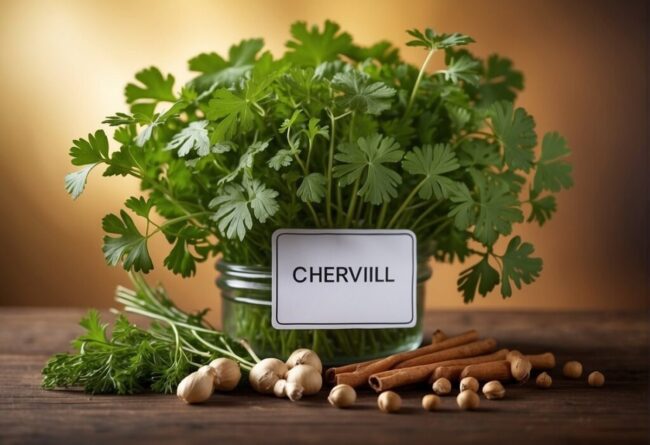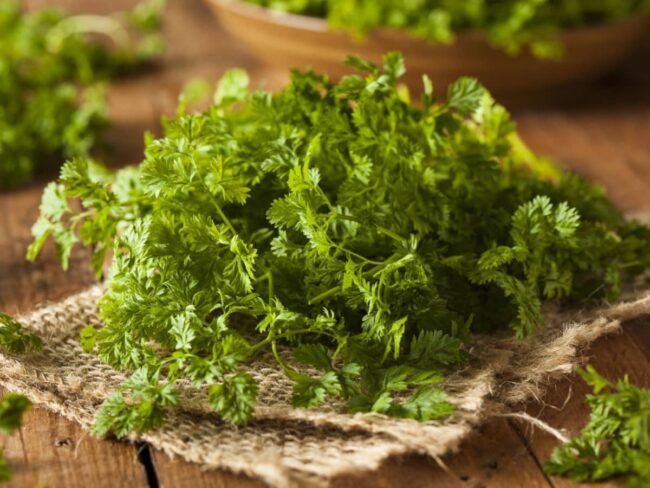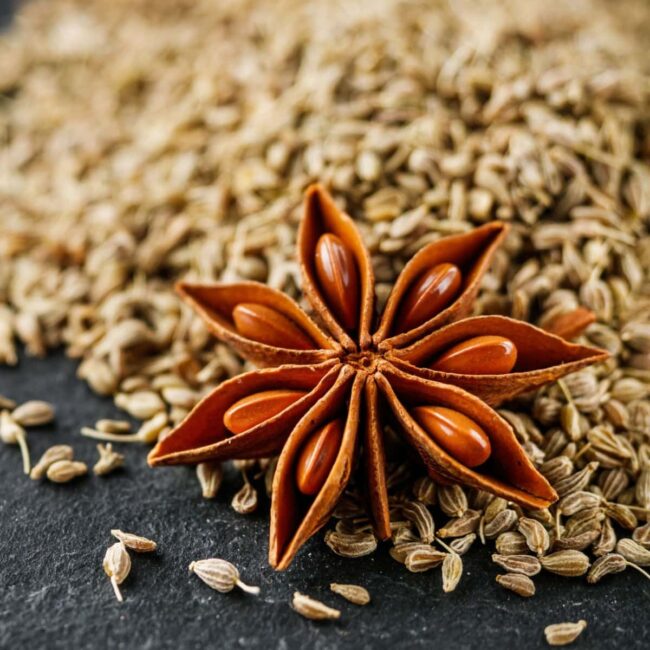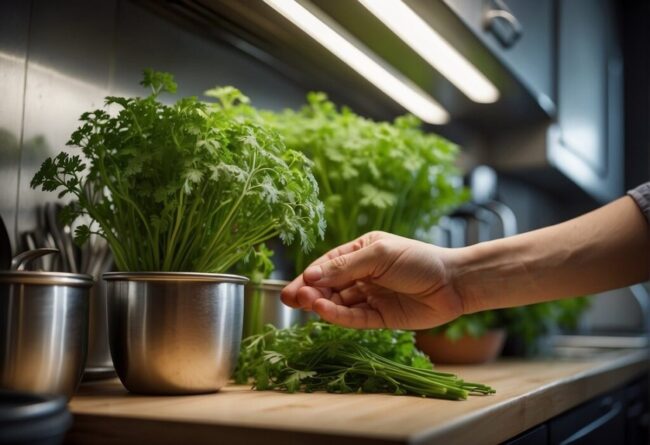4 Fragrant Alternatives to Chervil You’ll Love
Chervil substitutes bring delicate herbal notes when this light, slightly sweet herb isn’t available.
Certain herbs match its freshness, while others introduce a bolder profile.
Soups, sauces, and garnishes stay flavorful with a carefully selected alternative.
The right swap blends effortlessly without taking over the dish.
What to Know About Chervil
Chervil is a delicate herb with a mild, slightly anise-like flavor. It is commonly used in French cuisine and pairs well with soups, salads, and eggs.
Plant Overview
Chervil is a gentle annual herb that belongs to the Apiaceae family.
This plant originally comes from the Caucasus region.
French cuisine embraces chervil for its ability to pair well with many different foods.
Its subtle flavor enhances dishes without overpowering them, making it a favorite among chefs and home cooks alike.
The herb adds freshness and a hint of anise, contributing to delightful culinary experiences across various recipes.
Using chervil can elevate meals by introducing a touch of sophistication and aromatic charm.
Taste Summary
Chervil offers a mild flavor that combines the essence of tarragon and parsley, along with a light touch of licorice.
This aromatic herb plays an important role in French cooking, often included in the fines herbes mix.
Its delicate taste enhances many dishes without overpowering them.
Chefs appreciate chervil for its subtlety and versatility, making it a staple in gourmet kitchens around the world.
Recognizing its unique profile can elevate your culinary creations to new heights.
Cooking Applications
Chervil features soft, lacy leaves that add a gentle touch to dishes.
Its delicate flavor enhances various sauces, including ravigote and Béarnaise.
This herb plays a key role in fines herbes, an important blend in French cuisine.
Renowned for its versatility, chervil elevates both simple meals and sophisticated recipes alike.
Chefs appreciate this herb not only for its taste but also for the elegance it brings to their culinary creations.
With such unique qualities, chervil truly deserves a place in any kitchen garden.
Health Benefits of Food
Chervil adds a unique flavor to dishes while boosting their nutritional value.
This herb is rich in vitamin C and also provides vitamins A and B complex.
Potassium and calcium are among the minerals found in chervil, enhancing its health benefits.
With its distinct taste, chervil enriches meals in a way that few other herbs can match.
Its ability to elevate both flavor and nutrition makes it a valuable addition to any kitchen.
Enjoying this herb can lead to healthier eating habits overall.
Chervil Replacement Options
Best substitutes for chervil bring mild, slightly sweet herbal flavors to dishes. They complement a variety of recipes while maintaining a balanced taste.
Parsley and Tarragon Herbs
Tarragon provides a bittersweet taste reminiscent of licorice, making it a good alternative to chervil.
When using fresh tarragon, moderation is key due to its strong flavor.
Fresh parsley serves as an excellent substitute as well, contributing a bright and mildly peppery essence to recipes.
For the closest match to chervil's flavor profile, Italian flat-leaf parsley is the best choice.
Both herbs can elevate dishes with their distinct tastes and aromas.
Incorporating these herbs enhances meals with their unique characteristics while maintaining deliciousness in every bite.
Dill and Chives Herbs
Chervil often plays a subtle role in dishes, but certain herbs can take its place effectively.
Dill offers a bolder flavor, suitable for recipes that require an herb with more intensity.
Chives provide a gentle onion taste and work well as garnishes in meals where chervil is typically used.
Choosing these alternatives allows cooks to maintain delicious flavors while adapting to available ingredients or personal preferences.
Each option enhances the dish's overall profile without overpowering it, ensuring that meals remain enjoyable and flavorful.
Fennel and Its Leaves
Fennel leaves offer a mild anise flavor that serves as a great substitute for chervil.
Their gentle taste enhances salads and dressings nicely.
For those without fresh options, aniseed works well too; just a small pinch can replicate the soft licorice notes of chervil.
Caution is essential when using aniseed since it can easily overwhelm other flavors if added in excess.
Both ingredients add depth and freshness to dishes, making them versatile choices in the kitchen.
Incorporating these herbs can elevate meals with their unique characteristics.
Cilantro and Carrot Tops
Carrot greens serve as an unexpected yet fitting alternative to chervil, offering a mild and subtly sweet flavor.
Bright and citrusy notes define cilantro, making it another excellent substitute, particularly in salsa and guacamole.
When using cilantro, opt for half the amount compared to chervil for the best taste balance.
Both options provide unique tastes that can enhance various dishes effortlessly.
Finding these substitutes allows creativity in cooking while maintaining delicious flavors.
Using Substitutes in Recipes
Using substitutes in recipes helps maintain flavor when the original ingredient is unavailable. Fresh parsley, tarragon, or dill can offer similar taste profiles.
Soups and Stews
Chervil’s gentle taste works well in soups and stews, enhancing the blend of flavors.
Italian parsley or fennel leaves serve as excellent substitutes for chervil.
Adding these herbs early during cooking lets their flavors blossom fully.
When replacing dried chervil, keep a 1:1 ratio in mind, but beginning with a smaller amount is wise to fine-tune the taste later on.
Adjusting according to personal preference ensures that every dish shines with just the right hint of flavor.
Cooking becomes more enjoyable by experimenting with different herbs and finding what suits individual tastes best.
Salads and Sauces
Fresh herbs add a lively touch to salads and dressings.
Chervil’s subtle flavor enhances dishes without overpowering them.
Dill and chives contribute a similar brightness, making them great choices as well.
For those who enjoy tarragon, its bittersweet taste can be effective, but moderation is key; only half the amount of chervil should be used for balance.
Using these herbs creates delightful layers in your meals while keeping flavors light and refreshing.
Fish and Chicken
Dill adds a slightly sweet taste, enhancing lighter seafood dishes beautifully.
Its flavor works well alongside delicate proteins like seafood and poultry.
Chervil's subtle character also complements these ingredients nicely, making it a great choice for balancing flavors.
Using these herbs in smaller amounts helps maintain the focus on the main dish without overwhelming it.
Tarragon shines when paired with both seafood and poultry due to its excellent complementary qualities.
Enjoy experimenting with these herbs to elevate your meals!
Sauces and Toppings
Chives add a mild onion taste and make a great garnish.
Their subtle flavor enhances dishes without overpowering them.
Arugula brings a bold, peppery essence, perfect for adding excitement to sauces.
Using arugula sparingly ensures the dish remains well-balanced and enjoyable.
Both herbs can replace chervil effectively in various recipes, offering versatility in cooking.
This combination of flavors elevates meals while keeping them fresh and interesting.
Things to Consider When Substituting
When substituting ingredients, consider flavor intensity, texture, and moisture content. Adjusting quantities ensures a balanced final dish.
Flavor Changes
Chervil has a gentle taste with an anise hint, making it milder than other herbs.
Parsley serves as a good alternative, especially in French cuisine, without changing the dish's overall flavor much.
Tarragon provides a stronger anise taste and should be used carefully to prevent overwhelming the meal.
Some substitutes like cilantro can add a bitter note that might not fit well with your recipe.
Choosing chervil ensures a delicate balance while enhancing flavors without being too bold.
For those seeking variety in their cooking, exploring these options can lead to interesting results while maintaining harmony in dishes.
Different Texture Types
Chervil stands out with its delicate texture, making it a key ingredient in various dishes.
Fennel leaves share a similar light feel, enhancing recipes where subtlety matters.
Dill offers a different experience; when finely chopped, it can match chervil's softness but often has a stronger flavor that commands attention.
This quality can shift the balance of flavors in your dish significantly.
Using chervil allows for both taste and presentation to shine harmoniously together.
The unique characteristics of these herbs elevate any meal they touch.
Visual Appeal
Chervil's light green, lacy leaves offer a unique look that many substitutes struggle to match.
Italian parsley serves as a close visual alternative, keeping dishes attractive while adding flavor.
Chives present a different shape with their small and tubular form yet still add vibrant greenery to meals.
Changing herbs can influence the overall appearance of your dish in subtle but noticeable ways.
Selecting the right herb makes all the difference in presentation and taste, enhancing any culinary creation with thoughtful choices.
Seasonal Availability
Alternatives for chervil are available year-round, ensuring recipes remain consistent throughout the seasons.
Parsley stands out as a reliable choice, often found in grocery stores everywhere.
Tarragon also serves as a good substitute; while it can be fresh in summer, dried options remain accessible all year long.
Spring and early summer are prime times for chervil's growth; outside these months, exploring other herbs is wise.
Always check the availability of your chosen herb to keep meal preparations smooth and enjoyable.
Flexibility with ingredients allows home cooks to create tasty dishes no matter the season.






